
Content
The Web 2.0 Community
News about the future of Software Architecture
2008 to be the European Year of Intercultural Dialogue
Recommended Book
GlobalSourcingNOW
The car that makes its own fuel
New project puts European adolescents under the spotlight
Agenda
Club of Amsterdam Search
Submit your article
Contact
Subscribe
The Web 2.0 Community

Maarten Visser,
Performance, Productivity and Integration Evangelist, BPMi Business Systems
The Vision
All information in the world like facts, knowledge, concepts, ideas and stories should be available to everybody. Only the information that can bring harm to others, like certain government (medial records) and organisational information should be locked away. All other information should be shared so that it can be used to push innovation.
When all information is stored in a structured way based on international standards, it can then be automatically organised in unlimited ways, again using open standards. When this is done correctly, we can realize an open platform, on which applications and tools can be built to support all possible ways we want to view and respond to this information. There should be all kinds of (visual) interfaces, and these interfaces should automatically adapt based on current knowledge (a different interface for children), disabilities (a different interface for blind people), type of work, culture, environment, device, or current goals.
If all information becomes available to everybody, we will need new systems for patents, payment in research projects and international laws on copyright. These systems could also result in new ways to look at how local or worldwide decisions are made. […]
Benefits of the new architecture
A worldwide open and standardised community will have the following benefits:
- No login (just one profile for everything you do)
- No boundaries to access information
- No boundaries to realize seamless collaboration
- No expensive parallel development projects
- Unlimited ways to structure information
- Unlimited automatically connected sources
- Unlimited Interfaces to consume and respond to information
- Unlimited collaboration on research, projects and knowledge.
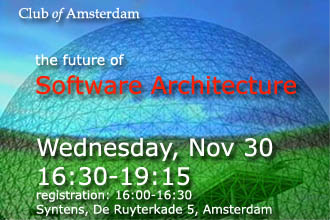
News about the future of Software Architecture

SAP AG’s high-stakes gambit to rip apart its enterprise applications suite and build them on a services orientated architecture (SOA) platform is showing results, as reflected in a solid earnings report.
The software vendor hasn’t finished converting mySAP into Web Services, and “until they take the giant application and break it into thousands of Web Services, I don’t consider the application a services orientated architecture platform,” said AMR analyst Jim Shepherd. “Today, SAP has several hundred Web Services posted to the SAP development network, so developers and partners can work with them, but they haven’t by any means finished rebuilding the core of the mySAP product, which SAP said will be complete in 2007.”

New browser Flock gives taste of Web 2.0
A small team of developers in California on Friday launched a cutting-edge Firefox-based Web browser dubbed Flock, which integrates next-generation Web technologies such as RSS content feeds, blogs and bookmark and photo sharing.
“We started Flock to build tools that empower people and smooth out some of the more hairy parts of living and working online. As it is, we live and breathe this stuff everyday and wanted better tools to do the things that we love doing online.”
News about the future

In a demonstration that could foretell the future of videoconferencing, scientific visualization and digital cinema deployment, scientists from around the world meeting in San Diego were treated to the world’s first real-time, international transmission of super high-definition (SHD) 4K digital video. 4K images have roughly 4,000 horizontal pixels – offering approximately four times the resolution of the most widely-used HD television format, and 24 times that of a standard broadcast TV signal.
The 4K transmission linked the University of California, San Diego and Keio University in Tokyo via 15,000 kilometers (roughly 9,000 miles) of gigabit Internet Protocol (IP) optical-fiber networks, and allowed organizers to show attendees the most varied 4K content ever presented at a single event anywhere in the world to date.

Secret codes in printers may allow government tracking
Tiny dots produced by some laser printers are a secret code that can allow the government to track down counterfeiters, a new study concludes, raising the hackles of privacy advocates.
The Electronic Frontier Foundation said its researchers recently broke the code behind the tiny tracking dots and said the US Secret Service confirmed that the tracking is part of a deal struck with selected color laser printer manufacturers to identify counterfeiters.
“We’ve found that the dots from at least one line of printers encode the date and time your document was printed, as well as the serial number of the printer,” said EFF researcher Seth Schoen.
Next Event: Wednesday, November 30, 16:30-19:15

the future of Software Architecture
Wednesday, November 30, 2005
Registration: 16:00-16:30, Conference: 16:30-19:15
Where: Syntens, De Ruyterkade 5, 1013 AA Amsterdam
With
Maarten Boasson, Professor, Chair, Industrial Complex Computer Systems, University of Amsterdam: Do we want to keep software architecture alive?
Maarten Visser, Performance, Productivity and Integration Evangelist, BPMi Business Systems: The future of web communities
Bert Oosterhof, Corporate Senior Architect and Director of Technology EMEA, Informatica Europe: Software architecture adjustments for a changing business
and our Moderator Karel van der Poel, CEO & Co-founder, Mirror42
2008 to be the European Year of Intercultural Dialogue
2008 to be the European Year of Intercultural Dialogue
The European Commission has proposed 2008 to be the Year of Intercultural Dialogue as an instrument to raise awareness of this theme among citizens, particularly young people.
The idea behind the year is to promote intercultural dialogue to help people “acquire the knowledge and aptitudes to enable them to deal with a more open and more complex environment” and and raise the awareness of European citizens, and all those living in the European Union, of the importance of developing active European citizenship that is “open to the world, respectful of cultural diversity and based on common values”.
Under the Commission’s plans, the 10m euro would be used for an information campaign, grants for a limited number of actions at EU level (eg major festivals or sporting events) particularly targeted at young people and to co-finance actions at national level with a strong European flavour.
Recommended Book
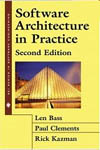
Software Architecture in Practice, Second Edition
by Len Bass, Paul Clements, Rick Kazman
Introduces the concepts and practices of software architecture, what a software system is designed to do and how that system’s components are meant to interact with each other. DLC: Computer software.
| GlobalSourcingNOW |
GlobalSourcingNOW is a FREE daily and weekly newsletter providing the latest updates on the global offshoring and outsourcing industry. GlobalSourcingNOW is hosted by Evalueserve, a leading provider of expert knowledge services. Industries such as Information Technology, Human Resource Management, Finance & Insurance, Knowledge Management, Customer Relationship Management, Biotechnology, Engineering, and Research & Development are extensively researched and covered by GlobalSourcingNOW. GlobalSourcingNOW newsletters reach over 22,000 subscribers across 40 countries. For further details on this, please refer to this link: http://www.globalsourcingnow.com |
The car that makes its own fuel
| The car that makes its own fuel A unique system that can produce Hydrogen inside a car using common metals such as Magnesium and Aluminum was developed by an Israeli company Engineuity R&D Ltd . The system solves all of the obstacles associated with the manufacturing, transporting and storing of hydrogen to be used in cars. When it becomes commercial in a few years time, the system will be incorporated into cars that will cost about the same as existing conventional cars to run, and will be completely emission free. Using a light metal wire (such as: Aluminium, Magnesium), water and a special conversion unit, the company has succeeded to produce a continuous flow of hydrogen and steam under full pressure, temperature and power control. The hydrogen and steam produced, power a modified internal combustion engine. The production unit can also be used for producing hydrogen for fuel cells and other applications requiring hydrogen and/or steam. |
New project puts European adolescents under the spotlight
New project puts European adolescents under the spotlight
The key to health promotion and disease prevention in the 21st century is to establish an environment that supports positive health behaviour and healthy lifestyle. HELENA (Healthy Lifestyles in Europe by Nutrition in Adolescence) is a wide-ranging project designed to understand and effectively enhance nutritional and lifestyle habits of adolescents in Europe. Funded by the European Commission, it will study 13-16 year-olds using common methodology across 10 countries, leading ultimately to the development of a lifestyle education programme.
Adolescence is a crucial period in life and implies multiple physiological and psychological changes that affect nutritional needs and habits. The HELENA proposal includes cross-sectional, crossover and pilot community intervention multi-centre studies, as an integrated approach to the above-mentioned problem. The following aspects will provide the full information about the nutritional status of the European adolescents:
- Dietary intake, nutrition knowledge and eating attitudes
- Food choices and preferences
- Body composition
- Plasma lipids and metabolic profile
- Vitamin status
- Immune function related to nutritional status
- Physical activity and fitness
- Genotype (to analyse gene-nutrient and gene-environment interactions)
The requirements for health promoting foods will also be identified, and three sensory acceptable products for adolescents will be developed. Both scientific and technological objectives should result in reliable and comparable data of a representative sample of European adolescents, concerning: foods and nutrients intake, food choices and preferences, obesity prevalence, dislipidemia, insulin resistance, vitamin and minerals status, immunological markers for sub clinical malnutrition, physical activity and fitness patterns, and variations of the nucleotide sequence in selected genes.
This will contribute to understand why health-related messages are not being as effective as expected in the adolescent population. A realistic intervention strategy will be proposed in order to achieve the goals of understanding and effectively enhancing nutritional and lifestyle habits of adolescents in Europe.
Club of Amsterdam Agenda
| NEW: Our Season Events are Wednesdays 16:30! | |
| 16:00-16:30 Registration 16:30-17:45 Part I: Presentations 17:45-18:15 Break: Drinks and evtl. live music 18:15-19:15 Part II: Discussion | |
| Club of Amsterdam Season Events 2005/2006 | |
| .Nov 30 | the future of Software Architecture Where: Syntens, De Ruyterkade 5, 1013 AA Amsterdam [Building of the Chamber of Commerce] |
| .Jan 25 | the future of Futurist Tools |
| .Mar 1 | the future of Electronic Identity |
| .Mar 29 | the future of Governance |
| .Apr 26 | the future of Drugs & Pharma |
| .May 31 | the future of Reputation Management |
| .Jun 28 | the future of Journalism / Ethics in Journalism |
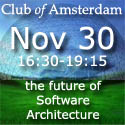
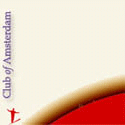
Club of Amsterdam Open Business Club
| Club of Amsterdam Open Business Club Are you interested in networking, sharing visions, ideas about your future, the future of your industry, society, discussing issues, which are relevant for yourself as well as for the ‘global’ community? The future starts now – join our online platform – and it’s for free …: |
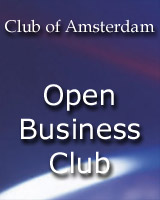

Leave a Reply